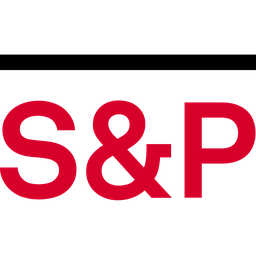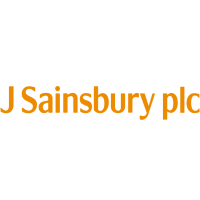
Hci Group Inc
NYSE:HCI


| US |

|
Berkshire Hathaway Inc
NYSE:BRK.A
|
Financial Services
|
| US |

|
Bank of America Corp
NYSE:BAC
|
Banking
|
| US |
C
|
C3.ai Inc
NYSE:AI
|
Technology
|
| US |

|
S&P Global Inc
NYSE:SPGI
|
Financial Services
|
| US |

|
JPMorgan Chase & Co
NYSE:JPM
|
Banking
|
| US |

|
Walmart Inc
NYSE:WMT
|
Retail
|
| US |

|
Citigroup Inc
NYSE:C
|
Banking
|
| US |

|
Apple Inc
NASDAQ:AAPL
|
Technology
|
| US |

|
NVIDIA Corp
NASDAQ:NVDA
|
Semiconductors
|
| US |

|
Alphabet Inc
NASDAQ:GOOGL
|
Media
|
| US |

|
Costco Wholesale Corp
NASDAQ:COST
|
Retail
|
| US |

|
Meta Platforms Inc
NASDAQ:META
|
Media
|
| US |

|
Microsoft Corp
NASDAQ:MSFT
|
Technology
|
| US |

|
Amazon.com Inc
NASDAQ:AMZN
|
Retail
|
| US |

|
Tesla Inc
NASDAQ:TSLA
|
Automobiles
|
| UK |

|
Tesco PLC
LSE:TSCO
|
Retail
|
Utilize notes to systematically review your investment decisions. By reflecting on past outcomes, you can discern effective strategies and identify those that underperformed. This continuous feedback loop enables you to adapt and refine your approach, optimizing for future success.
Each note serves as a learning point, offering insights into your decision-making processes. Over time, you'll accumulate a personalized database of knowledge, enhancing your ability to make informed decisions quickly and effectively.
With a comprehensive record of your investment history at your fingertips, you can compare current opportunities against past experiences. This not only bolsters your confidence but also ensures that each decision is grounded in a well-documented rationale.
Do you really want to delete this note?
This action cannot be undone.

| 52 Week Range |
83.79
121
|
| Price Target |
|
We'll email you a reminder when the closing price reaches USD.
Choose the stock you wish to monitor with a price alert.

|
Berkshire Hathaway Inc
NYSE:BRK.A
|
US |

|
Bank of America Corp
NYSE:BAC
|
US |
|
C
|
C3.ai Inc
NYSE:AI
|
US |

|
S&P Global Inc
NYSE:SPGI
|
US |

|
JPMorgan Chase & Co
NYSE:JPM
|
US |

|
Walmart Inc
NYSE:WMT
|
US |

|
Citigroup Inc
NYSE:C
|
US |

|
Apple Inc
NASDAQ:AAPL
|
US |

|
NVIDIA Corp
NASDAQ:NVDA
|
US |

|
Palo Alto Networks Inc
NASDAQ:PANW
|
US |

|
Alphabet Inc
NASDAQ:GOOGL
|
US |

|
Costco Wholesale Corp
NASDAQ:COST
|
US |

|
Meta Platforms Inc
NASDAQ:META
|
US |

|
SoFi Technologies Inc
NASDAQ:SOFI
|
US |

|
Microsoft Corp
NASDAQ:MSFT
|
US |

|
Amazon.com Inc
NASDAQ:AMZN
|
US |
This alert will be permanently deleted.
 Hci Group Inc
Hci Group Inc
Earnings Call Analysis
 Q2-2024 Analysis
Hci Group Inc
Q2-2024 Analysis
Hci Group Inc
HCI Group exhibited impressive financial results in the second quarter of 2024, reporting a pre-tax income of $76 million and earnings per share (EPS) of $4.24. This reflects a significant growth compared to the previous year, driven by a robust increase in gross premiums earned, which rose nearly 45% to $264 million. Each of the company's insurance divisions contributed to this growth, with in-force premiums remaining above $1 billion.
The company's underwriting performance showed a positive trend, with a gross loss ratio of 29.7%, down from 34% in the same quarter last year. This reduction is attributed to improved claim frequencies and decreased litigation rates, enhancing overall profitability. The consolidated combined ratio was marked at just under 68% this quarter, a notable decrease from 90% a year ago, suggesting increased operational efficiency and effective rate actions implemented previously.
HCI successfully completed its annual reinsurance program, securing a retention structure similar to the previous year. The anticipated total reinsurance expenditure is expected to be around $92 million per quarter. This strategic approach to risk management is complemented by the company's proactive move to assume additional policies from Citizens, with approvals for both Homeowners Choice and TypTap to take on up to 25,000 policies, potentially bolstering growth and further diversifying their risk profile.
Management emphasized the role of technology in achieving lower combined ratios and improved claims management. The advancements in their systems are not only expected to streamline processes but have already shown concrete results in loss ratio improvements. The management's confidence in their technological capabilities presents opportunities for expanding into other lines of business, aiming for similar improvements.
HCI Group remains committed to delivering value to its shareholders, exemplified by its consistent dividend payments, having announced a dividend of $0.40 per share for the quarter. This marked the company's 55th consecutive quarterly dividend, showcasing stability and investor confidence.
Even with the impact of Hurricane Debby, management indicated that the situation is expected to remain within statutory retention limits, with losses projected to be manageable. The company's proactive approach in risk management and its strong capital position of over $200 million in liquidity, alongside a declining debt-to-capital ratio, reinforces the firm’s ability to navigate potential challenges.
With anticipations of further growth in the upcoming quarters, HCI Group's focus on expanding its policy portfolio from Citizens could potentially contribute to steady revenue streams. Furthermore, a significant uptick in voluntary take-up rates is anticipated, thanks to favorable market conditions. The management's outlook remains positive for continuing to capitalize on current growth trajectories.




 You don't have any saved screeners yet
You don't have any saved screeners yet

Good afternoon, and welcome to HCI Group's Second Quarter 2024 Earnings Call. My name is Ali, and I will be your conference operator. [Operator Instructions]
Before we begin today's call, I would like to remind everyone that this conference call is being recorded and will be available for replay through September 7, 2024, starting later today. This call is also being broadcast live via webcast and available via webcast replay until August 8, 2025 on the Investor Information section of HCI Group's website at www.hcigroup.com.
I would now like to turn the call over to Mr. Matt Glover of Gateway Investor Relations. Matt, please proceed.
Thank you, and good afternoon, everyone. Welcome to HCI Group's Second Quarter 2024 Earnings Call. On today's call are Karin Coleman, HCI's Chief Operating Officer; Mark Harmsworth, HCI's Chief Financial Officer; and Paresh Patel, HCI's Chairman and Chief Executive Officer. Following Karin's operational update, Mark will review our financial performance for the second quarter of 2024, and then Paresh will provide a strategic update.
To access today's webcast, please visit the Investor Information section of our corporate website at hcigroup.com.
Before we begin, I'd like to take the opportunity to remind our listeners that today's presentation and responses to questions may contain forward-looking statements made pursuant to the Private Securities Litigation Reform Act of 1995. Words such as anticipate, estimate, expect, intend, plan and project and other similar words and expressions are intended to signify forward-looking statements. Forward-looking statements are not guarantees of future results and conditions, but rather are subject to various risks and uncertainties. Some of these risks and uncertainties are identified in the company's filings with the Securities and Exchange Commission. Should any risks or uncertainties develop into actual events, these developments could have material adverse effects on the company's business, financial conditions and results of operations. HCI Group disclaims all the obligations to update any forward-looking statements.
Now with that, I would like to turn the call over to Karin Coleman, Chief Operating Officer. Karin?
Thank you, Matt, and welcome, everyone. Before getting into a few comments on the quarter, I wanted to quickly touch base on Hurricane Debby. Our sympathies go out to those impacted by Debby. Our team is actively assisting our policyholders during this difficult time. Our early view is that Debby is not expected to be a reinsurance event, and we expect its losses to be well within our statutory retention.
Now for the quarter update. In the second quarter, HCI Group reported pre-tax income of $76 million and earnings per share of $4.24. This was a tremendous outcome.
Gross premiums earned increased almost 45% in the quarter to $264 million, with contributions from each of our insurance divisions. In-force premiums continue to be above $1 billion.
We reported another quarter of improvement in our underwriting results. Including weather losses in the quarter, our gross loss ratio was 29.7%.
HCI continued to deliver on its commitment to shareholders, paying a dividend of $0.40 per share, our 55th consecutive quarterly dividend.
We had several notable accomplishments in the quarter. First, Condo Owners Reciprocal Exchange, known as CORE, assumed additional policies from Citizens, and its total run rate premium is approximately $70 million.
Second, we completed our annual reinsurance program in the quarter, which included a structure similar to last year, and retention at both of our insurance carriers was largely unchanged. We were pleased with the outcome and we appreciate the continued support of our reinsurance partners. We believe reinsurers recognize the value of our technology and our claims organization.
With reinsurance now secure, we expect our total reinsurance spend across all reinsurance towers to be approximately $92 million per quarter. This includes the consolidation of CORE's reinsurance spend and minor risk transfer enhancements.
I'd like to reaffirm a few statements I made last quarter related to the assumption of policies from Citizens. First, I mentioned that we were retaining more policies than we expected. As more policies come up for renewal and transition to our paper, this is still the case. The retention of policies continues to exceed our expectations.
Second, I mentioned that the loss ratio was coming in better than expected. As this book becomes more seasoned, this is still the case. The loss ratio on policies we assumed from Citizens is continuing better than expected. Given the proven success of our technology to select attractive policies from Citizens, we have applied to assume additional policies from Citizens.
Homeowners Choice has been approved to assume up to 25,000 policies in October. TypTap has also been approved to assume 25,000 policies in October. And both companies have applied to participate in a November assumption as well Additionally, CORE has been approved to assume policies from Citizens in October. We will update everyone on our plans closer to the assumption date.
Overall, we posted another quarter of solid profitability, and we continue to make solid progress on our top line and bottom line.
Now I'll turn it over to Mark to provide more details on our financial results.
Thanks, Karin. As the numbers show, this was another solid quarter for the company. Pre-tax income was just over $76 million and diluted earnings per share were $4.24. These continued outstanding results are being driven by premium growth, higher investment income, a lower loss ratio and lower loss expense -- sorry, lower expense ratios.
Gross premiums earned of $264 million were 45% higher than the same quarter a year ago. The growth is being driven primarily by Florida, where the number of policies in force is up 40% from the same quarter last year.
Investment income of over $16 million is almost double what it was in the second quarter last year, driven by higher rates but also by higher invested balances. Consolidated cash and investments at the end of the quarter, up 45% higher than a year ago, driving investment income higher.
The consolidated gross loss ratio was 29.7% this quarter, down from 34% in the same quarter last year. We said some time ago that the loss ratio would come down to 30%, and we are there. For the first 6 months of this year, the consolidated loss ratio was 30.4%. While we had a little less weather than expected during the first half of the year, the lower loss ratio was driven by improvements in the frequency of all types of claims as well as much lower litigation propensity.
The combined ratio this quarter was just under 68%. This is a little lower because of the Citizens assumptions for which we had limited reinsurance and policy acquisition expenses for part of the quarter. If we normalize the numbers for that, the combined ratio this quarter would have been closer to 80%. This is a considerable decrease from our 90% combined ratio in the second quarter last year.
The reduction in the combined ratio was being driven by improving loss trends, rate actions taken last year as well as operational leverage. As an indication of that leverage, labor and operating expenses as a percentage of gross premiums earned in the first 6 months of this year are 9.5%, down from 11% during the same period last year. Our technology is allowing us to grow without adding a lot of additional costs, and this is helping to drive profitability.
Now a few comments on the balance sheet, which continues to improve. Over the last 12 months, consolidated cash and investments have increased by $390 million. Debt has dropped by $70 million. Shareholder equity has increased by $259 million. The debt-to-cap ratio has dropped from 62% to 34%. And book value per share has grown from $22 to $43. These improvements in the balance sheet have resulted from careful debt management, capital management, operational efficiency, profitability and growing cash flow.
I should also quickly talk about capital. We've been able to maintain holding company liquidity at well over $200 million despite the significant debt reduction. In addition, surplus at the underwriter level continues to increase.
In summary, we're in a solid financial position, and it continues to improve. The combined ratio is down, debt is down, premium revenue is up, investment income is up, cash and investments are up and capital continues to grow.
And with that, I'll hand it over to Paresh.
Thank you, Mark. Before going into my comments, I also want to offer my sympathies to those impacted by Hurricane Debby, and I wish everyone a speedy recovery.
Now moving my thoughts back on HCI. The insurance industry has a universal measure of success: the combined ratio. And across the broader industry, we see that even incremental improvement in the combined ratio requires a lot of effort. And if you want to move the combined ratio down in a material way, it is very, very difficult.
But as was highlighted in Mark's comments, in a few quarters, we've been able to show a huge improvement in underwriting results. Why is that? It's because of our technology. Our technology has not only led to a better-than-average combined ratios in the tough times, but it has shown that it can significantly improve the combined ratios in good times. We know we have the technology that works and that it can drive a better combined ratio. This is a huge accomplishment. And given our history, we ask ourselves, what else can we accomplish.
With that, I will turn it over for questions. Operator, please provide the instructions.
[Operator Instructions] Our first question is coming from Michael Phillips with Oppenheimer.
I guess first question would be around kind of CAT loss potential. There's been a lot of concerns, I guess, that we're fielding in the past couple of weeks and certainly maybe in the past month. What if, given all the growth these guys have had like from Citizens, what if something big comes through? What would that look like? And I don't know if there's a way to quantify that at all.
Maybe if you could, I don't know if you can do this, what if another Ian came through again, what would that look like in today's book? I think you had just under $1 billion gross and maybe $70 million or $65 million net. So is there a way to talk about that as kind of a similar path of what Ian would look like today?
Yes, Michael, it's Mark. So first thing, if a storm like Ian comes through, there would be, obviously, there would be a significant loss. We've got -- the way to think about it is there's the statutory retentions of Homeowners Choice and TypTap. Homeowners Choice is about $14 million, TypTap is about $9 million. And then after that, it kind of depends a little bit on where the storm is, in which underwriter the insurance or the losses in because, as you know, we've used -- utilized Claddaugh in this year's reinsurance program. So depending on the size, depending on which underwriter is impacted because Claddaugh is involved in the TypTap program, you could have a loss of $40 million to $45 million in TypTap if that layer was fully utilized and if that loss was a TypTap loss.
And then beyond that, as you know, anything beyond that gets a little bit complicated, but we do have some -- based on multiyear reinsurance benefits, there is the potential for some unwinding of those reinsurance benefits. But again, that sort of depends on size and which underwriter is affected. But that should sort of give you an idea.
And I guess -- sorry. I'm sorry, go ahead, Paresh.
Michael, answering that from a different perspective because we understand, given forecast, everybody is concerned. Why don't we just look at Ian? Ian was what Ian was. We had a net loss, right? It's all there. It is painful, no question. But in terms of where Ian estimates and where we sit at this point, right, both insurers went through about 40% of the tower in Ian, which was a CAT 5, right?
So should there be a weather event, we will have a certain amount of net retained losses. But after that, it is going to be covered by our reinsurance towers. And the key item, I think, that we sort of feel comfortable about with is that we have bought more than adequate reinsurance to pay the claims, and that's the whole purpose of it. And based on historical numbers, et cetera, that's what gives us comfort, yes.
Yes. Okay, sure. That's helpful. I guess, I was going to say one of the big differences between now and then is pricing is up quite a bit since 2022. So that's good news as well.
I guess the next question would be on your -- the numbers Karin gave on the October, what you're assuming and that may be pointing towards 25,000, 25,000. Do you think the -- I guess, the acceptance rate for this time around, is there any reason to think it might be different than what it was last year? I think you were just under 60%. Should that be higher this year? Or any thoughts there?
Just general comments is I think the October takeout, there are 9, 10, 12 carriers, something like that and over 400,000 policies that have been at least requested by these carriers who have been approved or speaking to them, obviously. This is on the personal line side. On the commercial side, it's slightly different.
So to put this in perspective, what Homeowners Choice did in November take out last year, there were -- the OIR had approved just over 200,000 policies in the takeout. This one is over twice that size. So I think it's going to be a lot more competitive, but we anticipated that. The other side of that is we like our opportunities and take-up rates, et cetera.
So the other side, the other caveat that everybody is also aware of is all of this also depends on your first question, as to what happens over the summer in terms of weather events, yes. So it's a lot of unforeseen, fuzzy numbers at the moment. We'll know in 2 to 3 months, yes.
Okay. Yes. And then last question for now, I guess, is your gross loss ratio, 30%. You mentioned some of the lower litigation in Florida again. And I think in the past, you've talked about maybe kind of a round number. It's down last quarter or the quarter before, you said around down about 35 or so percent. Is that still about the rate or has it gotten even better than that from what you said last time?
Yes, it has. Claims, I think I talked about this before, but claims frequency is down like 25% to 30% and litigation frequency, so litigation based on any number of claims is 35% to 40% now. So it's, yes, it's actually getting a little bit better.
Okay. Good. Congrats on the quarter end.
Our next question is coming from Matt Carletti with Citizens JMP.
Karin, in your opening comments, you made some -- you referenced how a lot of the takeouts are retaining better when they come up for renewal. And I was hoping you could maybe expand on that a little bit and help us with maybe, as we think about kind of the takeouts that were done in the fall and kind of the weighting of how much of that might have been concentrated with Q2 renewal dates, how much of that as we look forward might be Q3 or Q4 renewal dates? Just to help us understand kind of the population of policies coming up for renewals as we think about them retaining a little better.
Sure. Well, I can tell you that when we were doing the forecasting, we were expecting about a 65% retention rate the first year of the policies coming over, and it's holding closer to 85%.
And then as we think about Q2, 3Q, is there much difference in kind of the weighting of those renewal dates between the quarters or is it pretty similar?
Yes. Matt, I think -- I get into the technical net degree, the policies we took over from Citizens last November, right, will all roll onto our paper in a time frame from, let's say, February 22 to November 21, 2024. That's roughly the time frame, and it's an even spread. Whenever they roll over is, I think, what Karin is talking about, the 85% instead of the 65%. But until they roll over, they tend to be on our paper 90% of the time. That's just how that works because you assume the policy. So you got the economics. The big step is what happens when you offer a renewal, yes. And so the fact we're doing 85% versus 65%, which also tells us that there isn't going to be much of an attrition whether 20 policies renew next week or 200 renew next week, yes.
Right, right. That's a great outcome. Then maybe, Paresh, my next question for you is my understanding is Citizens is pushing some rate increases, maybe a little bigger than they have in the past. And what does that -- how does that kind of fit into how you look at kind of takeout, the potential for success in takeouts? Does it change at all kind of the -- you referenced, I think, about 400,000 kind of greenlight policies in the past as you kind of viewed Citizens. Does it kind of change that population at all? Or does it just -- does it make you think that you'll have a higher maybe attachment rate as you try for those takeouts because they're going to be getting -- the Citizens price is going to be going up over time, a little faster?
Yes. Matt, I would tell you that I think given our effectiveness in last year's takeout, I think this year's number would be very similar. That's on a level like-for-like basis, especially at the rate increase. So against that, to the earlier questions and comments, 400,000 policies being tagged for October, that and of itself should tell you that things are getting more competitive, yes. And so yes, you have that offsetting numbers and reality will be what it will be, yes.
Okay. Perfect. And then my last one, just Mark, my quarterly numbers question, if you have net premiums written handy.
Yes, it's $230 million.
Congrats on the quarter.
[Operator Instructions] Our next question is coming from Mark Hughes with Truist.
Thinking about the impact of Debby, I think you've described it as being within the retention of something less than $14 million for HCI and $9 million for TypTap. Is that the right way to think about it?
That's the retention rate. I can tell you that the claim volumes coming in as of late today is relatively low between the 2 carriers. We have less than 245 claims reported.
And is that to say, closer to 0 than to the retention numbers? Is that one way to think about it?
Well, it is still an ongoing event. So I think we have to consider that as well.
Yes, yes.
But I mean, 250 claims, it's not a lot of claims. You've got to get to a lot more than 250 claims to get to $14 million plus $9 million, $23 million. So when we say within statutory retention, the storm is still ongoing. We have to be a little bit careful about what we say. But 250 claims is not a lot of claims.
Yes, yes. Okay. And then any way to quantify how much benefit you got from more favorable weather this quarter? I think you said a little less than usual or maybe last year. But how much of a help was that?
It's not really that much, Mark. I mean our expectation of Q2 was maybe 1 point or 2 higher, that's it. I mean it's not really a weather story. If you look at -- I think I said earlier, if you go back to the second quarter of '22, claims frequency is down 30%. If you divide that between weather and nonweather, and this won't be a perfect analysis, but weather is down 32% and nonweather is down 28% or something like that. So the improvement in the loss ratio, the improvement in frequency, it's not a weather story. It's all claims are down. When I said it's down, it was a little lower than we expected to be. It was a very slight difference.
So I mean, I think we had said when we originally talked about 30% loss ratio could be a little bit higher than that in a heavy weather quarter, a little bit lower than that in a light weather quarter, but 29.7% was -- it is what it is. Yes. And weather is not really the story. Weather is not what's driving it down there.
Yes. Thanks for that clarification. How about your posture around voluntary policy growth? I don't think you do much in the storm season, but when we get into the fourth quarter, perhaps, how much appetite will you have? I guess, TypTap would be more to the point, but include the other subs, if you want, CORE or Homeowners Choice. But just how much of a voluntary growth are you interested in at this point?
Mark, it's Paresh. We are interested in growth and everything else, but you got to also keep in mind 2 mitigating factors. One is, given the size and scale that both of our carriers now operate at, incremental growth from voluntary writing is almost -- is there, but it sort of gets dwarfed by all the other things we're doing, right? If you did get the 25,000 policies, think of how much premium that is compared to writing 25,000 policies voluntarily one at a time, yes.
That's why it becomes us saying that it's not the thing to focus on as such, yes. Doesn't mean it isn't going on at the same time, but it's not going to be the material item.
And Paresh, you ended your commentary, I think, suggesting that there was more to be done. And I'm sort of curious if there's anything that you would care to share in terms of what you can do with the technology and capital that you can discuss now?
Yes. Look, here's what I'm trying to articulate, right? We are all part of the insurance industry and industry uses combined ratio as a benchmark. And listening to the efforts of every management team and everything else, everybody is trying to improve their combined ratios. And if you're going to improve it by a couple of points, it's a great -- it's a lot of effort and requires -- generates a sense of achievement. And that's one point.
The other point that's also there is, everybody is always selling every insurance management team the benefits of technology. And if you have this technology and that technology and this and that, it will improve your results, right? Let you grow faster and/or improve, more importantly, improve your combined ratio.
So technology has long been touted, insurance companies long want this thing, right? And we see all of that. We get bombarded with the same stuff.
The interesting thing what our technology has done is look at how much we moved our combined ratio in the space of a year. And this isn't because there was a hurricane last year and there wasn't a hurricane this year. This is actual numbers. And some of these things and the growth and selecting risks from Citizens and doing it efficiently and all that. It's the difference between technology that promises to improve your combined ratio versus technology that has been proven to improve your combined ratio. That's the something we find ourselves in, that we actually have technology that seems to work in the field. And if it does that, in this tough line of business that is homeowners insurance, especially in Florida, in a climate change environment, what happens if you apply this in a more benign line of business somewhere? What difference could we make there? That's -- I'm just asking the question, but it's worth exploring, and that's where the aspirations come to, yes.
Yes. Okay. If I could ask one more. The gross earned in premium, you've been about $250 million the last couple of quarters. And you talked about $1 billion in policies in force. Is that a pretty good run rate at this juncture, puts and takes, maybe some voluntary, more takeout that you've applied for later in the year, but is that a reasonable way to think about it, kind of the $250 million or so?
Yes. I mean, setting aside any takeouts that we might or might not do, if you look at the business where it is now, $250 million is a pretty good run rate.
[Operator Instructions] Okay. As we have no further questions at this time. This concludes our question-and-answer session. And I would now like to turn the call back over to Paresh Patel, who has a few closing remarks.
On behalf of the entire management team, I would like to thank our shareholders, employees, agents, and most importantly, our policyholders for their continued support. And as I had said earlier in my comments, our thoughts and prayers with those that are affected by Hurricane Debby, and we stand ready to help in every way we can. Thank you, and talk to you next quarter.
Thank you, ladies and gentlemen. This does conclude today's conference call. You may disconnect your lines at this time, and we thank you for your participation.